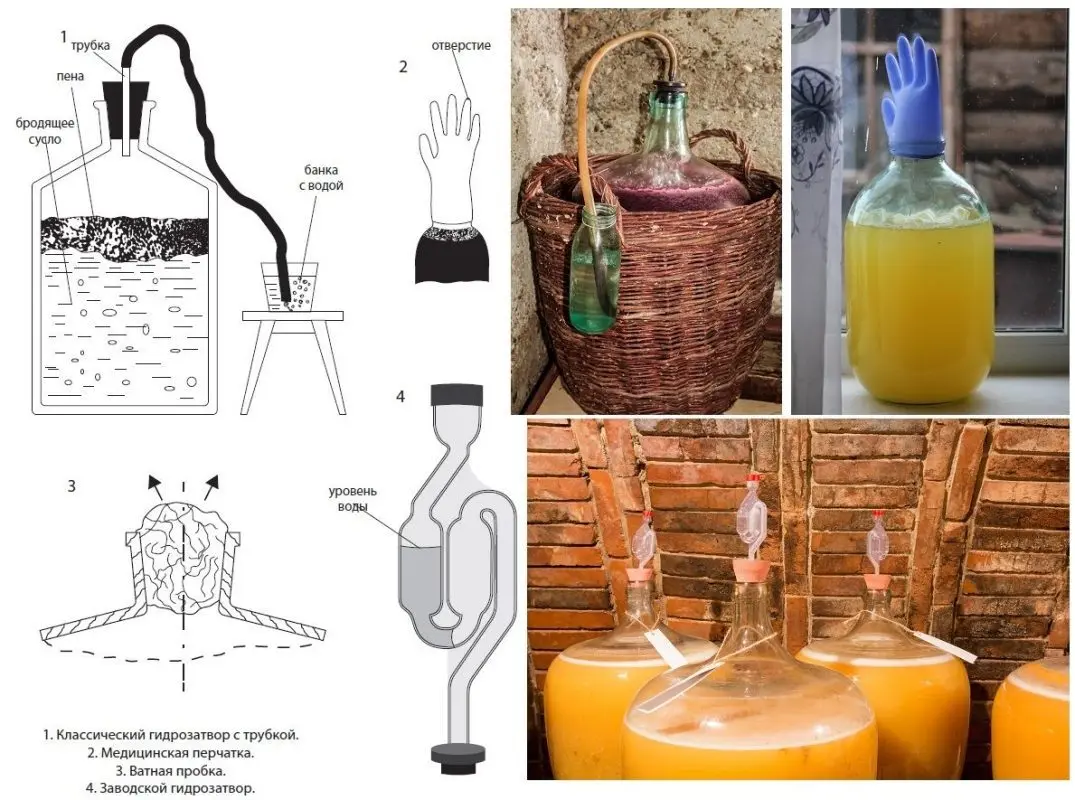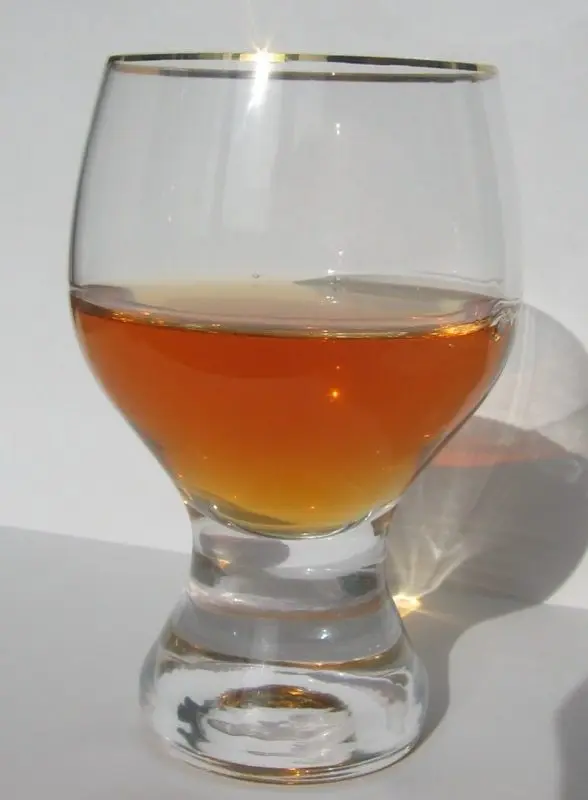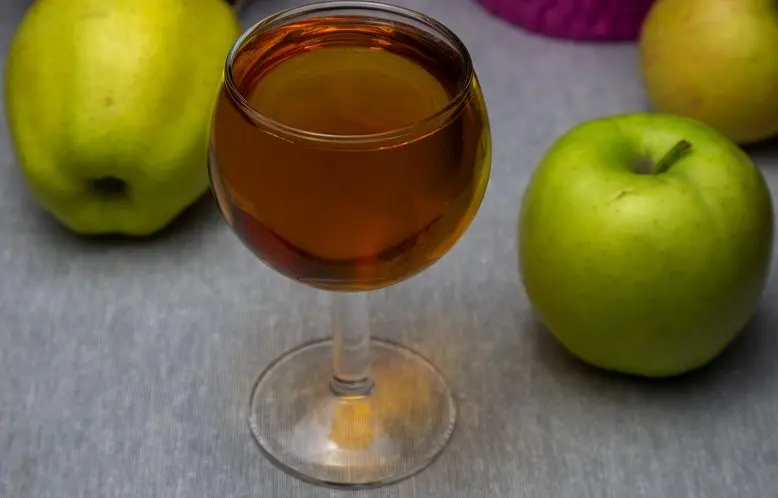Contents
In most cases, cider is made by fermenting apple juice with wild yeast. But any other juice is suitable, for example, pear, the technology does not change. I will show you how to make cider at home using two proven recipes: from apples and pure juice. Separately, we will consider the natural method of saturating the drink with carbon dioxide.
Cider is a regular (“still”) or carbonated apple wine with a different name, which came to us from France, where it is called “Cidre”. The preparation procedure for the two drinks is identical.
If the apples are very sour: they literally reduce the cheekbones and pinch the tongue, it is advisable to reduce the acidity by diluting the juice with water (up to 100 ml per 1 liter). It must be remembered that the addition of sugar also reduces the acid content. If the acidity is normal, water is not needed, it worsens the taste of the drink, making it “watery”.
Homemade apple cider
Apples of different varieties can be combined. The ideal ratio is one in which one part of sour apples is mixed with two parts of sweet ones. Pear cider is made using the same technology. If possible, I advise you to cook assorted – mix pears and apples in equal proportions.
Ingredients:
- apples – 10 kg;
- sugar – 1,5 kg;
- water (in rare cases) – up to 1 liter.
Recipe
1. Wipe the collected apples with a dry cloth (do not wash), put in a warm room for 2-3 days. Wild yeasts live on the surface of the fruit, which are needed for fermentation, it is important not to wash them off.
2. Remove leaves and ponytails. Grind the apples together with the peel and seeds with a blender or meat grinder until a homogeneous puree.
3. Rinse the fermentation tank with hot water and wipe dry. Fill with crushed apples to a maximum of 2/3 of the volume. For example, if three-liter jars are used, then up to 2,5 kg of apple slurry can be put in each jar. Free space is needed for foam and carbon dioxide.
4. For each kilogram of apples, add 100-150 grams of sugar, depending on the initial sweetness. The wort should be sweet, but not cloying. Mix.
5. Tie the neck of the container with gauze and put it in a dark place at room temperature for 3-4 days. Stir the contents of the jars every day, knocking down the dense top layer and drowning it in the juice. After 8-16 hours, a characteristic fermentation smell, foam and hiss appear.
6. Squeeze the juice from the apple slurry, which is then poured into a clean, dry fermentation container. Next, install a water seal on the jar (barrel) or attach a medical glove with a hole in one of the fingers (pierce with a needle).

7. Homemade apple cider should ferment in a dark place with a temperature of 18-27°C for about 30-65 days. Then a sediment will appear at the bottom, the water seal will not blow bubbles (the glove will fall off) and the drink will noticeably brighten, which means that the fermentation is over.
If fermentation does not stop after 50 days from the date of installation of the water seal, in order to avoid bitterness, it is necessary to drain the cider through a straw into another container and let it ferment under the same conditions.
8. Drain the fermented cider from the sediment, then pass through 3-4 layers of gauze.
9. Pour the filtered drink into bottles (if gas saturation is not planned, fill up to the neck) and tightly close with stoppers. Also, homemade cider can be stored in jars rolled up with lids.
10. Within three months, the drink should ripen in a cool room (6-12 ° C). Then you can proceed to the tasting.

The result is a honey-colored cider with a pleasant sweet taste and a strength of 7-12% (depending on the initial sugar content of the apples). Drinks easily, in moderation does not cause a hangover.
Apple cider without sugar
A classic recipe used in England and France. Will please lovers of natural drinks, as it is made without sugar.
Technology of preparation
1. Squeezed juice stand for a day in a dark place at room temperature.
2. Remove the juice from the sediment, pour into a fermentation tank and install a water seal (medical glove).
3. Place the container for 3-5 weeks in a dark place with a temperature of 20-27°C.
4. After the end of fermentation (the signs are described at the 7th stage of the previous recipe), pour the cider through a straw into another container, trying not to touch the sediment at the bottom.
5. If carbon dioxide saturation is not planned, tightly close the container, then keep for 3-4 months in a dark room with a temperature of +6-12°C.
6. Filter again, bottle, cork tightly. If stored in a refrigerator or cellar, the shelf life is up to 3 years. Depending on the sugar content of apples, the fortress is 6-10%.

How to make cider carbonated
The preparation of cider according to the two recipes above involves obtaining a so-called “quiet” drink without gas, in fact, ordinary apple wine. To saturate the cider with gas, you need to do the following:
1. After fermentation is complete, remove homemade cider from the sediment.
2. Prepare bottles (plastic or glass): wash and wipe dry.
3. Add sugar to the bottom of each bottle (10 grams per 1 liter of volume). The sugar will cause a slight re-fermentation, which will release carbon dioxide.
4. Fill the bottles with cider, leaving 5-6 cm of free space from the neck. Seal tightly with stoppers or lids.
5. Transfer the containers for 10-14 days to a dark room with room temperature. Check gas pressure once a day.
Attention! If the pressure is too high, the bottles can burst, so it is very important to bleed (release) excess gas in time in case of accumulation.
6. Move the carbonated cider to the refrigerator or cellar. Refrigerate for 3-4 days before use.










